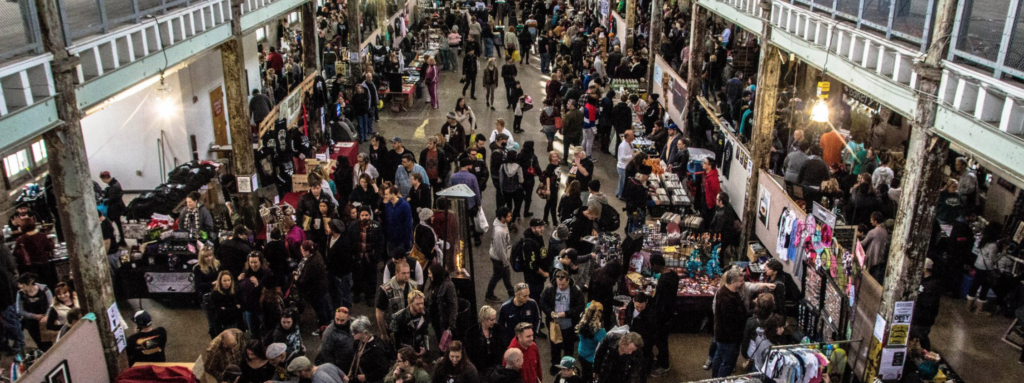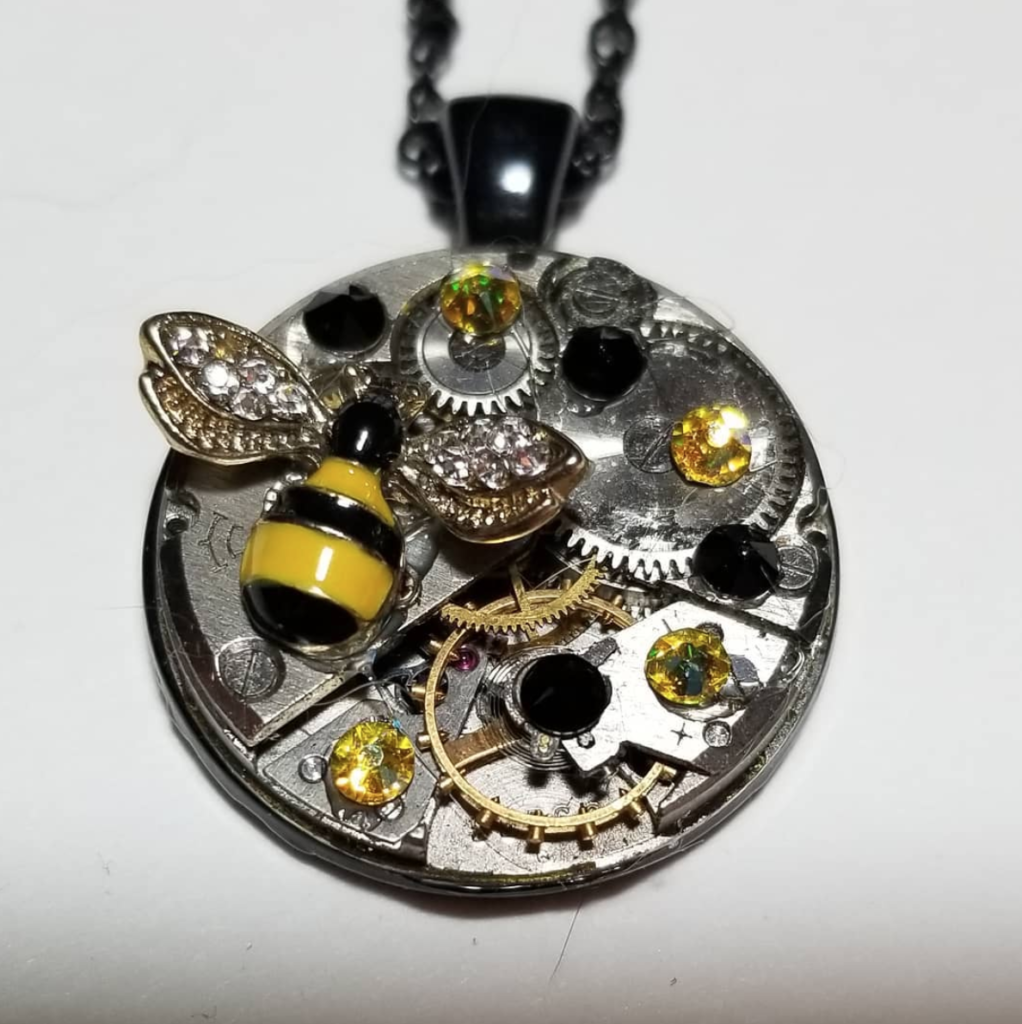
For my industry event I attended the Trenton Punk Rock Flea Market (https://www.trentonprfm.com/). The Trenton Punk Rock Flea Market is a large collection of vintage clothing, art prints, comics, vinyls, vintage toys, live music, pins, food trucks, animal bones and strange things in jars, and other random objects based on which vendors sign up for the event. It’s hosted annually in the Roebling Wire Works building, a historic building from the industrial age of Trenton that had been left to rot until recently, when the city decided to convert into a space for community members to use (https://jerseydigs.com/trenton-real-estate-development-roebling-center-71-clark-street/). As such, the worn down interior of the building can only add to the “punk rock” experience. The entire flea market is run by Joseph Kuzemka, a Trenton native who began it in 2013 with the intention of making a safe space that could bring together the community. Joseph can also be seen walking around the flea market and hosts a “Blitzed History” show with members from the crowd that can be watched on TPRFM’s website. Overall, the sense of community is very strong, and as soon as you walk through the gates, you become part of that community too.

During my visit to the TPRFM I interacted with a lot of the artists and designers – people trying to sell their original art, whether that be on shirts, enamel pins, zines, or paper prints. One of the creators I interacted with was Heather Johnson of “Watch Me Craft”, a one-woman company that focuses on enamel pins and handmade necklaces which often feature watch parts. You can find more of her work on her Instagram page @heatherwildchild.
While Heather did have a wide array of her handmade necklaces – probably 20 to 30 of them, selling from $25 to $50 each – it seemed most of her sales were in enamel pins, which covered the front of her display table. When I asked her about it, she said the pins were a combination of her own original art and other media she had found online. So while you could get a pin of her art of an octopus, you could also get a pin of Garfield or the cast of Beetlejuice (which I did). She said the process for pin creation was very easy; all you had to do was find a reputable company who would make your pins, often in bulk purchases of 100 or more and for relatively cheap (she said she paid around $125 for a 100-set). The vendor she used was called the Sunday Co., a group who she said was the “only place to go” for pins (https://thesundayco.com/).

However, she said the pins were more of a side hobby and her main focus was on her handmade necklaces, which she either made at home or in a Maker Space in New York of which she was a member. When I explained my senior thesis idea to her – the VR cryptid museum – she said that while she did not know much about 3D modeling, it was a solid and interesting idea. Who knows, maybe she’ll make her way to the Senior Showcase. She also emphasized the importance of community. In her own work, her time in the Maker Space was often a way of developing her own sense of community and getting feedback on her work. She said even though I was working alone, I could rely on my fellow students for help and that I should extend the same courtesy and help others where I could. In some ways it seemed that to Heather community feedback and support was just as important as individual workflow and creativity. Overall, I left the conversation with the intent of being less self-reliant and more open to my fellow student’s feedback or constructive criticism.

My time at the Trenton Punk Rock Flea Market was insightful, if not for my own project then as a look into how other artists are able to get out into the real world and design, create, and sell their work. The flea market is a niche community that was able to expand into a facet of Trenton community and become a popular event outside its own bubble in everyday communities. In much the same way I hope to exhibit my museum for a niche few that will hopefully generate enough interest to get others into the cryptid scene.